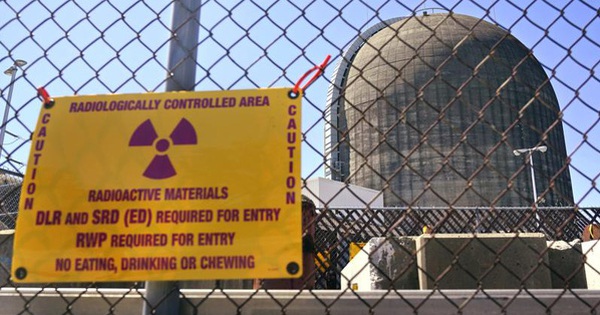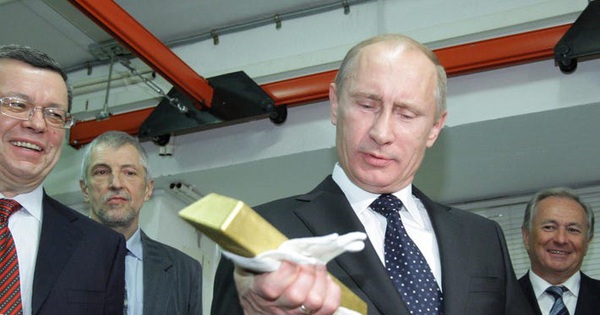How Russia built its own payment system to avoid sanctions
Western sanctions have disrupted nearly every aspect of Russia’s financial system, except for one.
Russia’s domestic payment system still works smoothly after Visa and Mastercard left earlier this month. The West considers card giants leaving Russia to be a big problem, but in reality it is not. Most Russians can still use MasterCard and Visa logo cards for domestic payments.
According to the Nilson Report, by the end of 2020, there are about 197 million Mastercard and Visa cards in Russia. But they are not subject to the US payment system. For many years, these card companies used a payment system managed by the Central Bank of Russia.
The National System of Card Payments (NSPK) operates a financial system that processes card transactions in Russia, including cards bearing the Mastercard and Visa logos. The system is part of an eight-year effort by Russia to make its economy immune to financial pressure from the West. The Kremlin has been actively promoting Russia’s own card firm – Mir – built on NSPK’s infrastructure. According to Mir’s website, currently, more than 100 million Mir tokens have been issued since its launch in 2015.

Card using Mir payment system announced in 2015. Photo: Zuma Press
This payment system is the victory of Russian President Vladimir Putin in the financial war with the West. “We serve national security in the field of payments,” said Alma Obayeva, director of the Russian National Council of Payments.
However, the withdrawal of Visa and Mastercard from Russia also makes it difficult for Russians to pay abroad. The Mir system only applies to a few small countries around Russia, mainly the countries of the former Soviet Union. In recent days, Russian officials have been negotiating to expand the number of accepting countries to Venezuela and Iran, according to TASS. Some Russian banks said they are exploring cooperation with China’s UnionPay to issue cards that can be used by customers in more places.
In a phone call in February, discussing possible sanctions against Russia, the leaders of Visa, MasterCard and many other payment firms told US Treasury officials that banning US payment networks from processing Russian banking transactions will not have much of an impact. Sanctions will only push trading towards Mir more.
In the world, more and more countries choose to develop their own payment infrastructure, limiting the influence of Visa and MasterCard. Since then, the ability of the US to influence countries through sanctions on the banking system has also decreased. China’s UnionPay handles most domestic transactions with cards issued by domestic banks. Turkey and India have both launched their own systems over the past few years to reduce banks’ reliance on Visa and MasterCard.
Russia has been trying to reduce the financial impact of the West after it was sanctioned in 2014 for its annexation of Crimea. At that time, Visa and Mastercard handled most card operations in Russia. Their network acts as a link between merchants and banks that issue debit and credit cards.
In March 2014, hundreds of thousands of Russians realized their cards were not working overnight. US sanctions over Crimea have forced Visa and Mastercard to block service with some Russian banks.
Russian officials immediately recognized the problem. In just a few months, President Putin signed the law establishing the NSPK. Visa and Mastercard were then required to hand over transaction processing to NSPK. Initially, these two companies objected and said they would leave Russia. But in early 2015, they agreed to use NSPK’s system.
That same year, NSPK launched Mir. In Russian, this word means “world” and “peace”. It was selected through an Internet contest.
Initially, the Russians were not very interested in changing Visa and Mastercard branded cards to Mir cards. In 2017, Russia passed a law requiring banks to pay salaries and wages of civil servants via Mir cards. The number of people using the Mir card therefore skyrocketed. By the end of 2020, the number of cards issued will increase to 95 million, from 2 million in 2016. Mir is also accepted at many POS machines.
NSPK also invests heavily in promoting Mir, sponsoring the national football team and launching attractive promotions such as cashback. Through payment processing, NSPK has collected for the budget a large amount of transaction fees that would otherwise flow into Visa and Mastercard. In 2020, the payment system made 8.2 billion rubles ($94 million) in net profit.
In recent weeks, Mir card issuance has exploded as foreign card giants leave. Russia’s leading bank – Rosbank – recorded a more than doubling in demand for debit cards operating on the Mir system in the first quarter compared with the same period last year. “Demand for the Mir card is crazy,” said Obayeva. “People are waiting in long lines to open the card.”
Ha Thu (according to WSJ)
at Blogtuan.info – Source: vnexpress.net – Read the original article here



